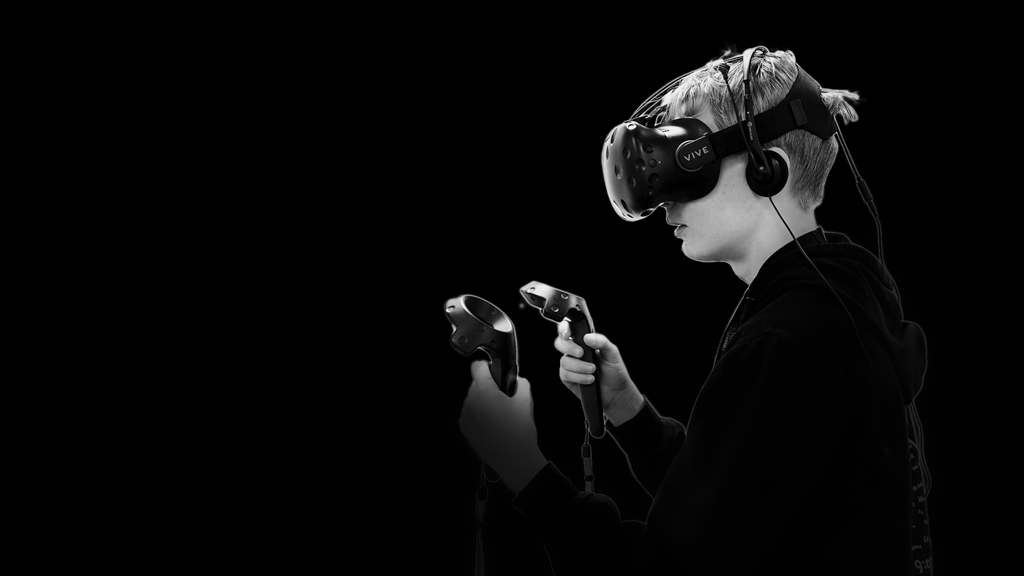On 28 October 2021, Mark Zuckerberg, CEO and Chairman of the then Facebook, will change the name of his and one of the world’s most valued and famous brands to Meta. A highly conscious and extremely strategic manoeuvre, but also a signal of a possible epochal change. A leap bigger than one of the world’s leading tech giants? Time will tell.
For some it may have been world news, for others something that may have gone unnoticed. But as I said, it was no coincidence, quite the opposite. Why the change has affected, and will affect, people so differently most likely lies in how closely, or not closely, people live their lives on the internet.
Terms metaverse is not uncommon in the same context where we come across words like crypto, fintech and social media. The metaverse has become something of a bubble, and if interest continues along with the evolution of technology today, it’s not unlikely that we’re already getting a heads-up on the internet’s perhaps latest game-changer. The concept will influence and change the internet to such an extent – that we haven’t seen anything like it since the internet was launched.
Do you feel worried? Don’t be.
Metaverse is a positive solution that comes with many benefits once it is launched, otherwise not so many people would be excited. But let’s not be too hasty, if you’re not already familiar with what the metaverse is, it’s time for us to explain it to you.
What is Metaverse?
First of all, the metaverse is not really a new term. It has been used in many contexts such as movies, comic books, games, books and other types of entertainment. Depending on the source, it represents different variations of essentially the same concept – something that brings together people from different places and separate universes to unite them in a place where exchanges can take place and where we can interact with each other.
If we translate it into a reality with solutions we can actually achieve in real life, i.e. IRL, we can, with the help of today’s modern technology, come up with a concept that eventually results in a metaverse that then refers to a new version of the internet. An internet that is seen as a new kind of environment that allows and enables deeper sharing and exchange for us humans.
It involves a variety of products and technologies, such as NFTs (Non-fungible tokens), cryptocurrencies, 3D avatars, decentralised applications, virtual landscapes, environments and the possibility of winning prizes. This also applies to games, the facilitation of file sharing, the possibility of conducting business through smart contracts and the ability to do one’s job through the digital reality.
The Metaverse thus becomes an alternative to the real universe and represents a collective collection of virtual open worlds and environments, together with interoperable assets and experiences. This means that the metaverse has great potential to change the way we humans communicate and interact with each other. Moreover, it can change how we do our jobs, how we spend our money, what we spend it on and much more.
Does this seem far away?
Let’s see what suggests that a metaverse is probably not as far away as we might think. We can start by looking at the technology we already have today, a technology that is one of the cornerstones of the metaverse.
Today, we may take it for granted that we have the internet, social networks and that we can spend time with our loved ones online practically whenever we want. We also carry the internet with us almost everywhere we go via our mobile phones. Something that means we always have information close at hand when we need it. If we need to know the weather, we have an app for that. If we have a moment to spare while waiting for the bus, we have an app with games to help us pass the time a little faster. Or maybe we’re wondering how much a day’s lunch costs at the nearest restaurant, in which case we’ll even produce a map with directions to help us find it. We also have our phones with us to be available, so we can receive information from others as messages, reminders or emails. An everyday life for many.
Other technologies paving the way for a metaverse
Phones, TVs and computers are our most common platforms for entertainment and/or information. And if we’re bored of that, today we can also put on a VR headset and experience various simulations, games directly in a 3D environment and instantly take the experience up a few levels.
For those interested in business and financial transactions, blockchain technology and cryptocurrencies have not gone unnoticed either. We’ve all heard the success stories, or perhaps the opposite – of those who just missed the boat when Bitcoin exploded. Blockchain technology has given us the means to create an economical, and also proven, infrastructure, which through its code offers perhaps the most secure verification we have seen today for transactions.
Throughout the ages, mankind has periodically created groundbreaking innovations and solutions supported by advanced technologies. A technology we know works here and now. The big breakthroughs and technological leaps are often made by individuals who are not content with what we have here, Bill Gates, Steve Jobs and, in this case, Mark Zuckerberg, who see a potential that can be harnessed for so much more.
The technique that gives us a hint of what a metaverse might look like
Back to the metaverse, which means that we are most likely to see a digital reality that allows us to interact and communicate with each other on a deeper level than before. In reality, this will work through a combination of social media, online gaming, AR, VR and cryptocurrencies and other technologies. How this will work in more detail, starts with a technology called AR (Augmented Reality) and a perhaps more familiar one, VR (Virtual Reality).
AR technology allows us to add visual elements, such as objects, sounds and other sensory cues, to existing environments to enhance the user experience. Here you might be wondering what kind of user experience we mean? This is the type we encounter in our daily lives. Imagine that you meet an old friend whose name you may not remember. So what makes it so unlikely that you are wearing a pair of ordinary glasses that you always wear, but that these have a technology so that when you meet this person you get information such as name, age and perhaps occupation next to your face?
Before you get sceptical and question this theory, remember that we already have this kind of information in our trouser pockets. After a quick scroll on Facebook or LinkedIn, we have the answer to what we are looking for. We’ve even seen evidence of devices that work exactly like the glasses we just mentioned. The question is, how long until they are as common as a smartphone or smartwatch? This is what AR can mean for a metaverse.
Then there are the possibilities of VR technology, the virtual reality that comes in handy when we can’t physically meet each other. Then we need to connect online. Do you recognize yourself? This is something quite a few people have already encountered during the pandemic. The difference here is that the VR device visually places us in a room where we can sit in a meeting at the same desk, interact with the room and talk to each other’s avatars.
Metaverse at Boden Business Park
Here at Boden Business Park, with Boden Game Camp at the forefront, we have already tested the technology. As silly as it looked sitting next to each other physically in the real world, we connected via a pair of VR headsets in a new room for a meeting. In the virtual room we had a virtual whiteboard that we wrote on and in the beginning it was maybe mostly stick figures that were drawn on it, you have to start somewhere. The point of the meeting was primarily to test the possibilities of VR. But there and then in the real physical room – IRL – there was no whiteboard, but in the VR room we could write things and share computer screens for presentations, just like in a real meeting room.
In reality, it was perhaps unnecessary, because we would have had all the functionality we needed if we had just rolled in a whiteboard to the part of the office we were sitting in. If we had stood up and walked about ten more metres, we would have had a TV screen to share presentations. But this was an eye-opener for us, because if we take the VR headset home, we could have met in the same simulated environment again, with exactly what we needed, including a connected computer, to do our job.
To sum up, the metaverse is probably not impossible after all.
It may be closer than we think.


